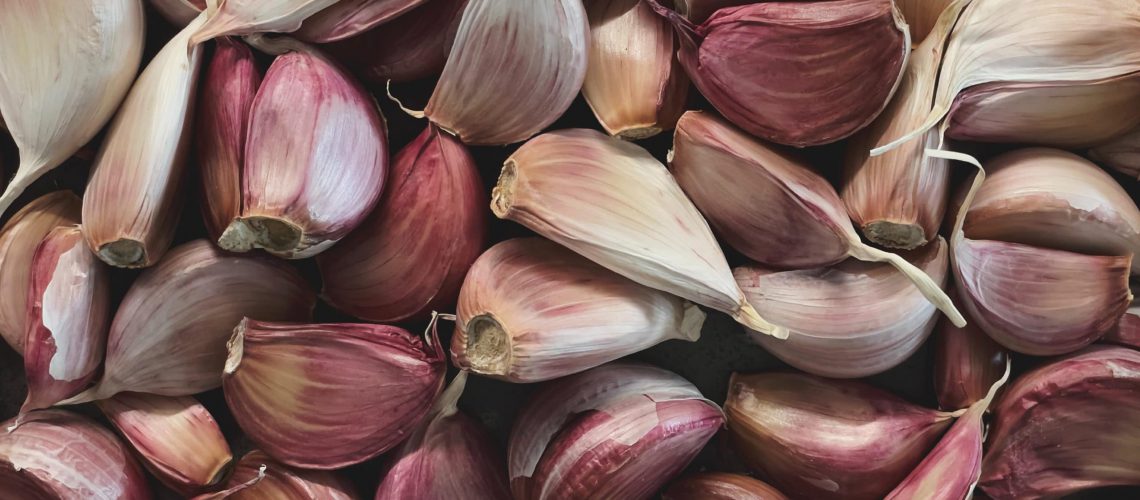Have you ever diced up a clove of garlic and wondered why its distinct scent lingered on your fingertips for hours (or even days) after? We’re here to shed some light on garlic’s origins and the unique chemistry that gives it such a popular taste and persistent smell.
An Ingenious Ingredient
Garlic is a popular and potent cooking ingredient found in a variety of traditional cuisine. Although the common garlic plant (Allium sativum) was originally native to Central Asia, its popular flavor and scent quickly spread the cultivation and culinary use of garlic worldwide. It is the key ingredient in several beloved cultural dishes, from Romanian mujdei (a spicy Romanian sauce made from crushed garlic cloves) to Italian bagna càuda (a fondue-like dish made of garlic, anchovies, oil and butter). You may find it surprising that the wonderful smell and taste we associate with garlic is the very feature that helps keep garlic plants safe from predators in the wild.
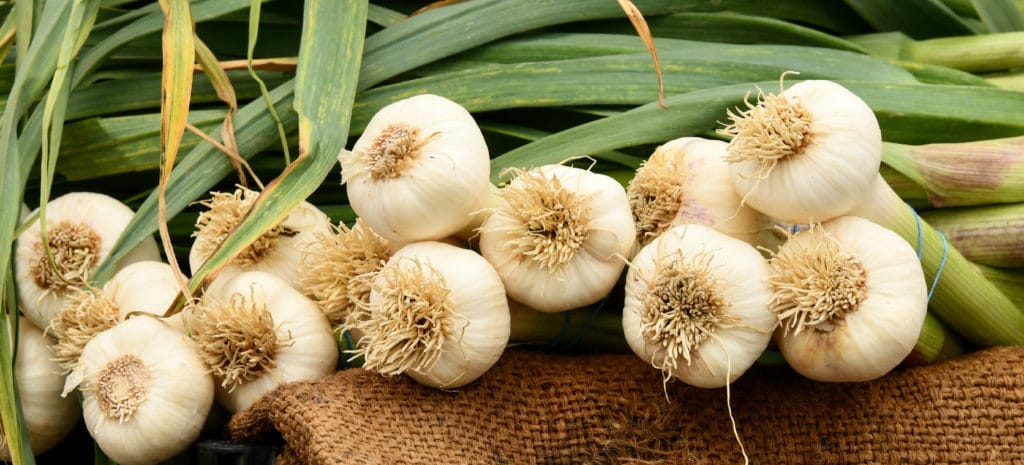
Garlic’s Natural Armory
The forest can be a very dangerous place for a growing garlic plant, as garlic bulbs are stationary and cannot flee when cattle and antelope come looking for a snack. Instead, garlic uses chemistry as a natural defense against hungry herbivores. Garlic plants prepares for an attack by synthesizing large amounts of a chemical called alliin in the plant’s bulb (fig. 1). Like a powder keg ready to explode, alliin will wait patiently inside the garlic cloves until the right spark sets it off.
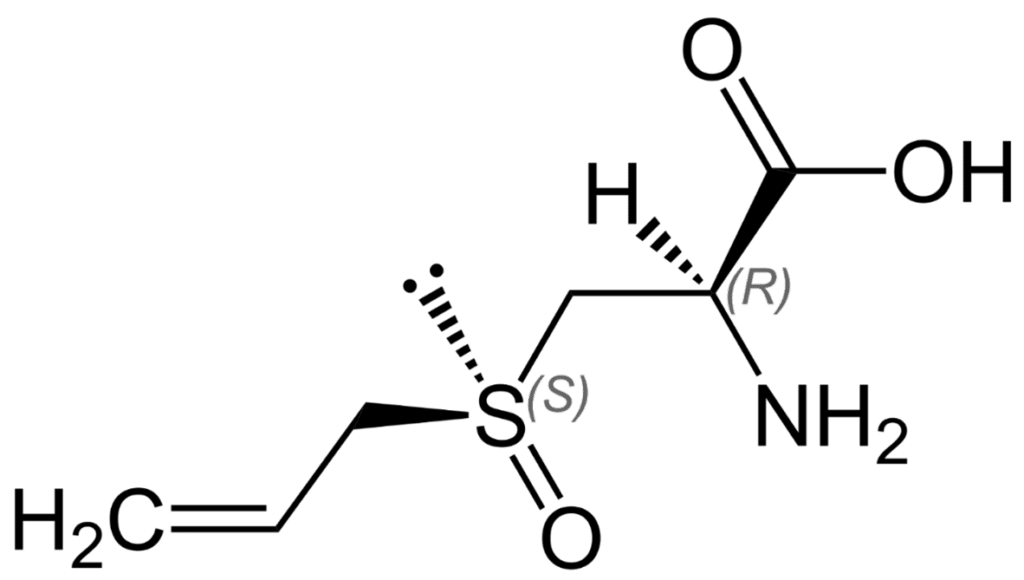
Fig. 1 Alliin is only found in domestic garlic (Allium sativum) and ramsons (Allium ursinum). Interestingly, onions (Allium cepa) do not naturally produce alliin. Instead, onion cells manufacture a similar chemical called isoalliin.
From Patient to Pungent
To set off an explosion of garlicy flavor and scent, alliin must be converted into allicin. Allicin is a thick, yellowish liquid that is responsible for garlic’s famous scent and smell. In order to go from peaceful alliin to potent allicin, garlic needs a specific tool—alliinase (fig. 2). Alliinase is an enzyme, and enzymes are like the tool kit of the biological world. You may have heard of amylase, an enzyme in your saliva that helps your body break down starchy foods, such as potatoes and grains, into simple sugars. When the enzyme alliinase is released from its membrane in the garlic bulb, it will convert alliin into allicin through a series of chemical reactions. Most herbivores (and vampires) are not fond of allicin’s strong smell and taste, so they will avoid the plant at any cost. In this way, garlic protects itself without having to move an inch.
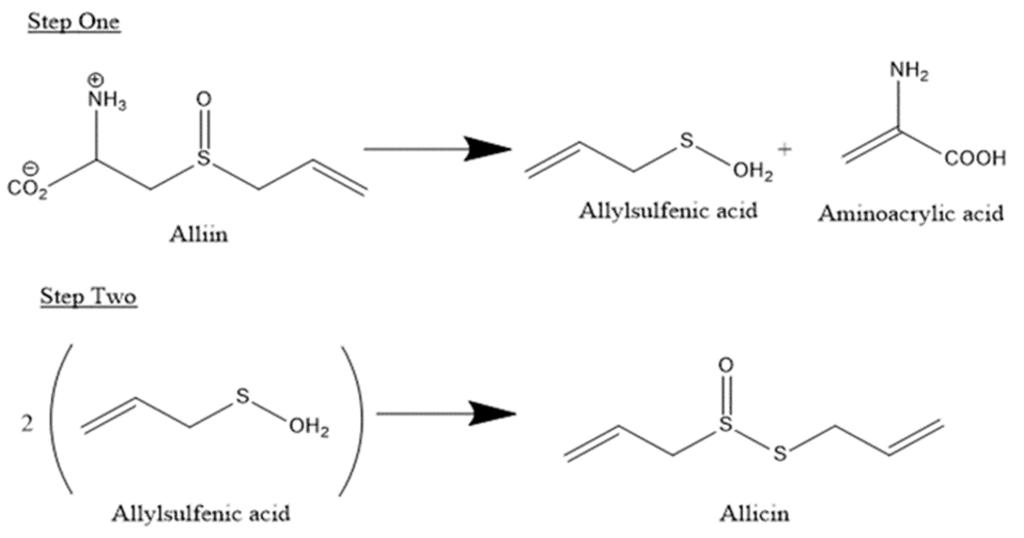
Alliin is converted into allicin through a two-step chemical reaction. In the first step, the 2-propenesulfenic acid is eliminated from the amino acid unit (with aminoacrylic acid as a byproduct). In the second step two allylsulfenic acid molecules are combined in a condensation reaction to form allicin.
How is Garlic’s Scent Activated?
When teeth bite down on a garlic bulb, the physical chomping pressure breaks down membranes inside the plant, releasing the enzyme alliinase, which creates those potent allicin molecules. This is why professional chefs recommended to both crush and finely chop garlic cloves before using them for cooking. At Nature’s Fusions Essential Oils, we ensure that the garlic in our oil blends has been pulverized to perfection, guaranteeing plenty of alliin-to-allicin conversion. We take advantage of garlic’s natural chemical defense system by including it in our Nature’s Sword Extreme Protective Blend.
Allicin’s Aftermath
In nature, allicin in garlic bulbs will break down into four other compounds within 16 hours at room temperate (about 23 °C). Evolutionarily, this a very helpful property, as it protects the garlic plant. Too much exposure to allicin could break down the garlic’s own cellular membranes. This allows garlic to deploy allicin when attacked by grazers, without constantly fighting off its own line of defense. The most long-lasting of those four compounds is allyl methyl sulfide (AMS). When ingested by humans, AMS breaks down much more slowly than most other food molecules because it does not get metabolized in the gut or liver. This means it can linger in the bloodstream for up to two days after consumption, causing garlic-scented breath and sweat. So, it’s probably best to hold off on the garlic bread on the night before your hot date!

Allyl Methyl Sulfide (AMS) is composed of carbon, hydrogen, and sulfur.
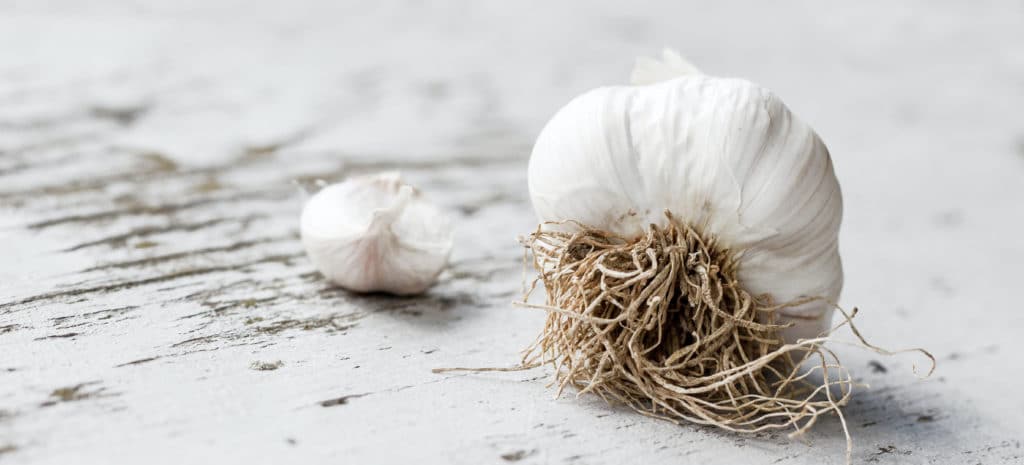
Garlic-savvy
Now you know garlic’s wonderful flavor is activated by chopping and crushing garlic bulbs, converting alliin into smelly allicin. You’re also aware that the sturdy garlic molecule AMS is responsible for causing garlic smells to linger long after consumption. Armed with this knowledge, you are now officially garlic-savvy! March forth to season your foods (and avoid smelly kisses) with confidence!

